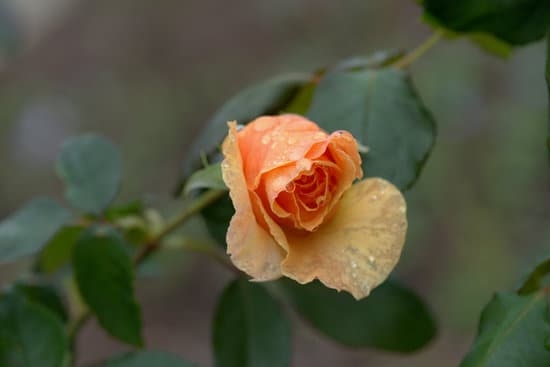Sleepers in gardens ideas have gained popularity for their versatility and rustic charm in outdoor spaces. Sleeper garden design involves using reclaimed or new sleepers, which are large, rectangular pieces of timber, concrete, or stone, to create various elements in a garden landscape. From pathways to raised garden beds and retaining walls, sleepers offer a durable and visually appealing solution for adding structure and definition to gardens.
One of the key benefits of incorporating sleepers in garden design is their ability to seamlessly blend with different styles of landscaping. Whether you prefer a modern, minimalist look or a more natural and organic feel, sleepers can be adapted to suit your aesthetic preferences. Additionally, these materials are often cost-effective and low-maintenance, making them an attractive option for both professional landscapers and DIY enthusiasts looking to enhance their outdoor spaces.
In this article, we will delve into the world of sleeper garden design, exploring the various types of materials available for creating stunning garden features. From discussing creative ways to use sleepers in pathways to providing step-by-step guides on constructing retaining walls and showcasing stylish sleeper furniture for outdoor living areas, we aim to inspire readers with innovative ideas for incorporating sleepers into their own garden landscapes.
Types of Sleeper Materials for Garden Design
When it comes to designing a garden using sleepers, one of the key decisions to make is selecting the right material for your project. There are various types of sleeper materials available, each with its own unique characteristics and benefits. One of the most popular choices is wood, which provides a natural and rustic look to garden designs. Wood sleepers are versatile and easy to work with, making them an excellent option for DIY projects.
Concrete sleepers offer a more modern and durable alternative for garden design. They are long-lasting and resistant to weathering, making them ideal for creating sturdy structures like raised beds or retaining walls. Additionally, concrete sleepers come in a variety of colors and textures, providing endless possibilities for customizing your garden design.
Stone sleepers add a touch of elegance and sophistication to outdoor spaces. They can be used to create striking features such as pathways or edging, adding visual interest to the overall landscape.
Incorporating a combination of these sleeper materials in your garden design can create a dynamic and visually appealing outdoor space. Whether you choose wood for its natural charm, concrete for its durability, or stone for its timeless beauty, each material brings its own unique character to the design. By carefully selecting the right sleeper materials based on your aesthetic preferences and practical needs, you can create a stunning garden that reflects your personal style and enhances your outdoor living experience.
| Sleeper Material | Characteristics |
|---|---|
| Wood | Natural, rustic look; versatile; easy to work with |
| Concrete | Modern, durable; resistant to weathering; variety of colors/textures |
| Stone | Elegant, sophisticated; used for pathways/edging; timeless beauty |
Creative Ways to Incorporate Sleepers in Garden Paths
When it comes to designing a garden, pathways play a crucial role in not only guiding visitors through the space but also adding structure and visual interest. One creative and versatile material that can be used for constructing garden paths is sleepers.
These thick, sturdy beams of wood, concrete, or stone can offer a rustic and natural look to your outdoor space while blending seamlessly with the surrounding greenery. Here are some unique ideas on how to incorporate sleepers in garden paths:
- Create a meandering pathway using wooden sleepers placed in a zig-zag pattern. This design adds a touch of whimsy to your garden while allowing for a leisurely stroll among the plants.
- For a more modern and minimalist aesthetic, consider using concrete sleepers for your garden path. These sleek and smooth surfaces provide a clean and contemporary look that complements both traditional and modern garden styles.
- Integrate stone sleepers into your pathway design for a timeless and elegant feel. Whether you opt for natural stone sleepers or replicas made from concrete, the textured surface adds depth and visual appeal to your outdoor space.
By exploring different materials and layouts, you can create unique pathways that enhance the overall design of your garden while providing functionality for daily use. Whether you prefer a classic wooden look, an industrial concrete vibe, or a natural stone feel, there are endless possibilities when it comes to incorporating sleepers into your garden paths.
Additionally, mix-and-match different sleeper materials or combine them with other elements like gravel or plants to add dimension and interest to your pathways. Experiment with various shapes, sizes, and patterns to create visual impact and draw attention to specific areas of your garden. Remember that creativity knows no bounds when it comes to designing with sleepers in gardens – so let your imagination run wild.
Using Sleepers for Raised Garden Beds
Raised garden beds are a popular choice for gardeners looking to maximize space, improve drainage, and create a more organized and visually appealing garden. One creative and versatile material that can be used to construct raised garden beds is sleepers. Sleepers, typically made of wood, concrete, or stone, offer a rustic and natural look to the garden while providing durability and longevity.
Benefits of Using Sleepers for Raised Garden Beds
One of the main benefits of using sleepers for raised garden beds is their versatility in design. Sleepers allow for different shapes, sizes, and heights to be easily achieved, giving gardeners the flexibility to create custom-made planting areas that suit their specific needs and preferences. Additionally, sleepers are durable and long-lasting, making them a cost-effective choice for constructing raised beds that will withstand the test of time.
Design Ideas for Using Sleepers in Raised Garden Beds
When incorporating sleepers into raised garden beds, there are endless design possibilities to explore. One idea is to use stacked sleepers vertically to create tall raised beds with a more modern aesthetic. Another option is to arrange sleepers horizontally in a staggered pattern to add texture and visual interest to the bed’s design. For a more traditional look, consider using weathered wooden sleepers for a rustic feel that blends seamlessly with the natural surroundings of the garden.
By utilizing sleepers in raised garden beds, not only can you enhance the overall look of your outdoor space but also enjoy the practical benefits they offer. Whether you prefer a contemporary or classic style, there are numerous ways to incorporate sleepers into your garden design to create unique and beautiful planting areas that will elevate your gardening experience.
How to Build a Sleeper Retaining Wall in Your Garden
Building a retaining wall in your garden using sleepers can not only serve a practical purpose but also add an attractive design element to your outdoor space. Retaining walls are essential for holding back soil on sloped areas, creating different levels in your garden, and preventing erosion. Sleepers, with their durability and rustic charm, make for an excellent material choice for constructing these structures.
To begin building a sleeper retaining wall, the first step is to carefully plan and mark the area where the wall will be situated. Clear the area of any debris or vegetation and ensure that the ground is level. It’s crucial to also check if any underground utilities are present before digging.
Next, lay down a solid foundation by digging a trench where the first row of sleepers will be placed. This trench should be wide enough to accommodate the sleeper width and should provide a stable base for the wall. Add a layer of gravel for drainage before positioning the sleepers horizontally in the trench. Make sure each sleeper is level and use a spirit level to adjust as needed.
After laying down the first row of sleepers, continue stacking additional layers on top, staggering each joint like bricks in a wall. Secure each layer together using steel rods or rebar driven into pre-drilled holes in the sleepers. Backfill behind the wall with gravel or drainage rock to promote proper water drainage away from the structure. Finally, cap off the top of the retaining wall with coping stones or sleepers laid horizontally for a finishing touch.
| Step | Description |
|---|---|
| 1 | Plan and mark the area for the retaining wall |
| 2 | Dig a trench for the foundation and place first row of sleepers |
| 3 | Stack additional layers of sleepers, staggering joints and securing with steel rods |
Design Inspiration for Sleeper Garden Furniture
Sleeper garden furniture can add a touch of rustic charm and design flair to outdoor spaces, creating a cozy and inviting atmosphere in your garden. There are various creative ways to incorporate sleeper materials into furniture pieces that not only look stylish but also provide functionality for outdoor living. Here are some ideas for using sleepers in garden furniture:
- Sleeper Benches: A classic choice for outdoor seating, sleeper benches can be both comfortable and visually appealing. Consider adding cushions or throw pillows for added comfort and style, creating a cozy nook in your garden where you can relax and enjoy the surroundings.
- Sleeper Tables: Whether you opt for a dining table, coffee table, or side table, incorporating sleeper materials can add character to your outdoor dining or lounging area. Pair it with chairs made from matching sleeper wood or use a mix of materials for an eclectic look.
- Sleeper Planters: Get creative with your garden furniture by using sleepers to build integrated planters. These multi-functional pieces can serve as both seating and planting areas, adding greenery and color to your outdoor space while maximizing functionality.
In addition to the traditional uses of sleeper materials in garden furniture, consider thinking outside the box and repurposing sleepers into unique pieces that reflect your personal style and creativity. From lounge chairs and daybeds to swings and hammocks, there are endless possibilities for incorporating sleepers into your outdoor decor. Embrace the natural beauty of wood and explore different finishes or treatments to enhance the longevity of your sleeper garden furniture while maintaining its aesthetic appeal.
Overall, designing garden furniture with sleepers offers a versatile and sustainable option for creating an inviting outdoor retreat that seamlessly blends with the natural environment. Whether you prefer a modern minimalist look or a more traditional rustic feel, incorporating sleeper elements into your outdoor space can elevate the design while providing practical solutions for seating, dining, relaxing, and entertaining.
Let your imagination run wild as you explore innovative ways to integrate sleepers into your garden furniture design, turning your outdoor oasis into a stylish haven that complements the beauty of nature.
Maintenance Tips for Sleeper Garden Features
Sleeper garden features can add a rustic and natural touch to your outdoor space, but proper maintenance is key to ensuring they remain beautiful and functional for years to come. Whether you have sleeper pathways, raised beds, retaining walls, or furniture in your garden, following some simple maintenance tips can help prolong their lifespan and keep them looking their best.
Cleaning and Sealing
One of the essential maintenance tasks for sleeper garden features is regular cleaning. Depending on the material of your sleepers, you may need different cleaning methods such as using a stiff brush or pressure washer. Removing dirt, algae, mold, and other debris not only improves the appearance of the sleepers but also prevents deterioration over time. Additionally, sealing the sleepers with an appropriate sealant can help protect them from moisture damage and UV exposure.
Preventing Rot
Wooden sleepers are particularly susceptible to rotting due to constant exposure to moisture in the garden. To prevent this issue, it’s important to regularly inspect the sleepers for signs of rot such as soft spots, discoloration, or fungal growth. Treat any affected areas immediately with a wood preservative or fungicide to halt further decay. You can also elevate wooden sleepers slightly off the ground using concrete blocks or gravel to improve drainage and reduce moisture contact.
Regular Inspections
Another crucial aspect of maintaining sleeper garden features is conducting regular inspections to identify any wear and tear early on. Check for signs of movement or shifting in retaining walls, loose joints in furniture pieces, or sagging in raised beds.
Addressing these issues promptly can prevent more significant damage down the line and extend the longevity of your sleeper elements in the garden. By staying proactive with maintenance tasks, you can enjoy your sleeper garden features for years while enhancing the overall aesthetic appeal of your outdoor space.
By following these maintenance tips for sleeper garden features, you can preserve their beauty and functionality while ensuring they withstand the test of time in your outdoor space. With proper care and attention, sleepers can continue to enhance your garden’s design aesthetic and provide practical benefits for years to come.
Case Studies of Successful Sleeper Garden Designs
In conclusion, incorporating sleepers in garden design can truly transform outdoor spaces and add a unique touch to any landscaping project. From creating pathways to building raised beds and retaining walls, the versatility of sleeper materials allows for endless possibilities in garden design. By choosing the right type of sleepers for your project, whether it be wood, concrete, or stone, you can achieve a customized look that suits your style and preferences.
One of the most creative ways to utilize sleepers in gardens is by implementing them in garden furniture. From benches to tables and even outdoor lounges, sleeper garden furniture adds a rustic charm while being both stylish and functional. With proper maintenance and care, these pieces can withstand the elements and provide long-lasting enjoyment for outdoor living spaces.
For those seeking inspiration for their own sleeper garden designs, looking at real-life case studies can be incredibly helpful. Seeing how others have successfully incorporated sleepers into their gardens can spark ideas and creativity for your own project. Whether it’s a beautifully landscaped backyard with intricate pathways or a cozy patio with sleeper furniture, these examples showcase the endless possibilities when it comes to using sleepers in garden design.
Frequently Asked Questions
Can You Lay Sleepers Directly on Soil?
It is not recommended to lay sleepers directly on soil because the moisture from the ground can cause them to rot faster. It is advisable to place a layer of gravel or use concrete foundations to prevent this issue.
What Can I Do With Sleepers in My Garden?
There are various ways you can use sleepers in your garden. They can be used to create raised beds for planting flowers or vegetables, build retaining walls for terracing, construct seating areas, or even make pathways and steps.
How Long Do Wooden Sleepers Last in a Garden?
The lifespan of wooden sleepers in a garden can vary depending on factors such as the type of wood used, treatment applied, exposure to elements, and maintenance. On average, properly treated hardwood sleepers can last up to 20-30 years, while softwood ones may last around 10-15 years before requiring replacement due to decay or deterioration.

Welcome to my gardening blog! I am passionate about plants and enjoy sharing my knowledge and experiences with others. In this blog, I will write about everything related to gardening, from tips on how to get started to updates on my own garden projects.





